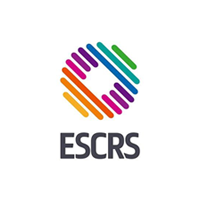
Year: 2016, ESCRS
Authors: Giardini P.; Hauranieh N.; Giardini P.; D’Amato Tóthóva J.
Purpose: Standardization of dropless cataract surgery consisting in minimal preoperative preparation and elimination of intraoperative BSS irrigation.
Setting: POLIVISUS, via A Moro 34, Brescia, Italy, Private Ophthalmology Clinic.
Methods: Sixty cataract patients were enrolled in a prospective study. “Dropless Surgery group” included forty eyes receiving Mydriasert ophthalmic insert (Laboratories Thea, France) and single application of eyeDRO corneal coating (Alchimia, Italy), before surgery. Control group included 20 eyes receiving topical mydriatics (Visufarma, Italy) preoperatively and irrigation with BSS (Alcon, USA) during surgery. All patients underwent phacoemulsification cataract surgery using Infinity equipment (Alcon, USA). Surgeon scored clarity of operative field and ease of manipulation at different intervals. Eye transparency was examined by slit lamp (Nikon, Japan), and epithelial damage by fluorescein staining, 2 hours postoperatively. All patients filled a self-assessment questionnaire.
Results: Corneal transparency and operative field clarity were significantly better in “Dropless Surgery group” than in Control group at each time interval. No eyes in “Dropless Surgery group” required further application of eyeDRO during surgery. Six irrigations were required on average in Control group with use of 13,6ml BSS per procedure. Frequency and volume of irrigation were increased in eyes with reduced transparency. Two hours postoperatively, 10% and 57% of patients showed moderate fluorescein staining in Dropless Surgery and Control group, respectively. 20% of patients in “Dropless Surgery group” reported foreign body sensation 24h postop compared to 86% in control group.
Conclusions: Dropless cataract surgery allowed to increase significantly the clarity of the operative field, facilitated surgical manipulation and improved patient comfort as compared to BSS irrigation procedure. Dropless cataract surgery permitted to minimize the variability related to preoperative preparation and intraoperative irrigation, and then resulted in simplification and standardization of the outcome of the phacoemulsification cataract surgery.
